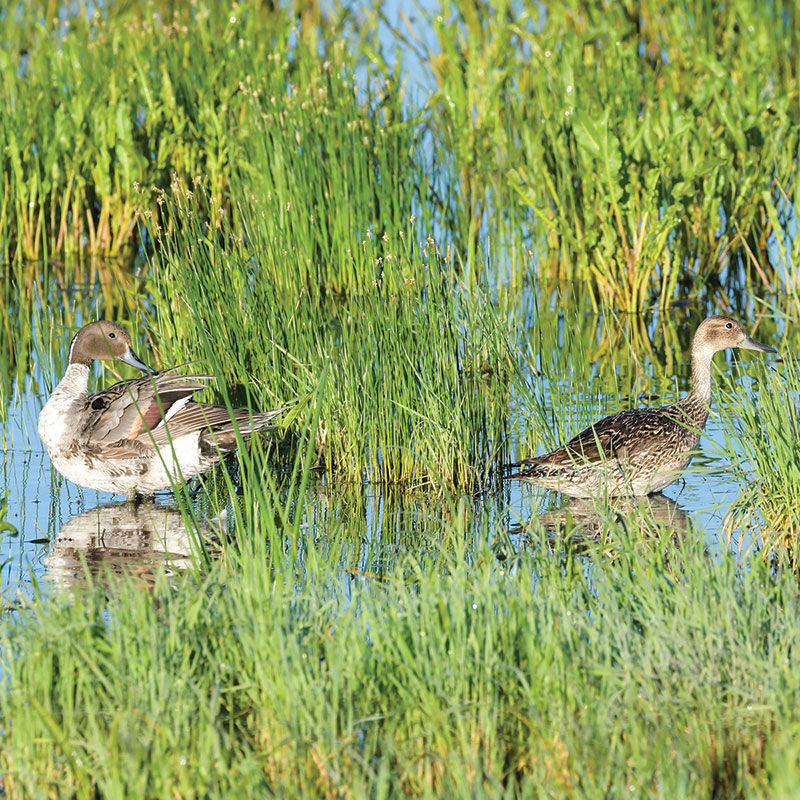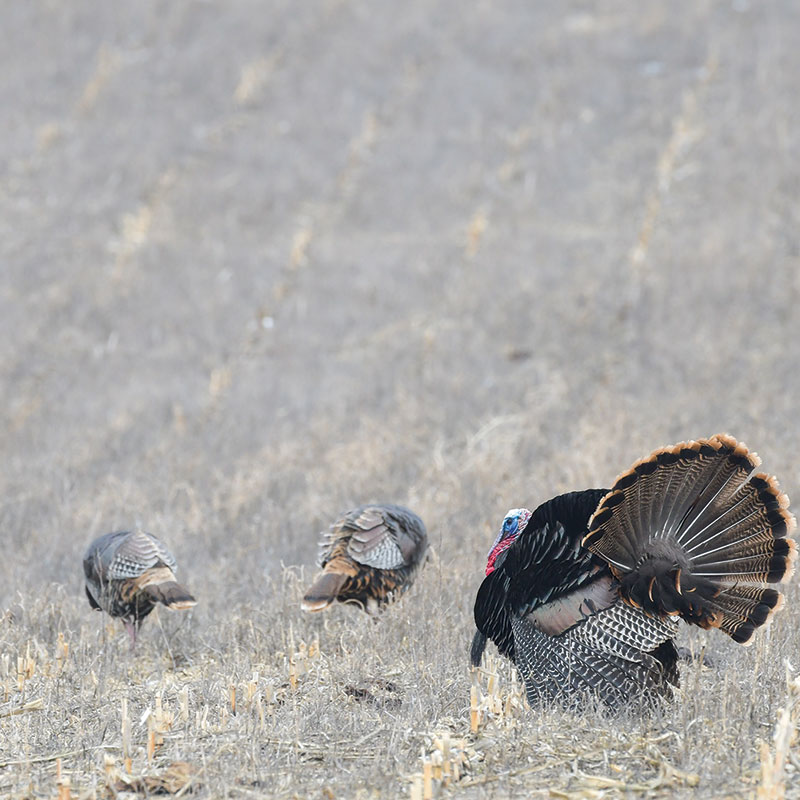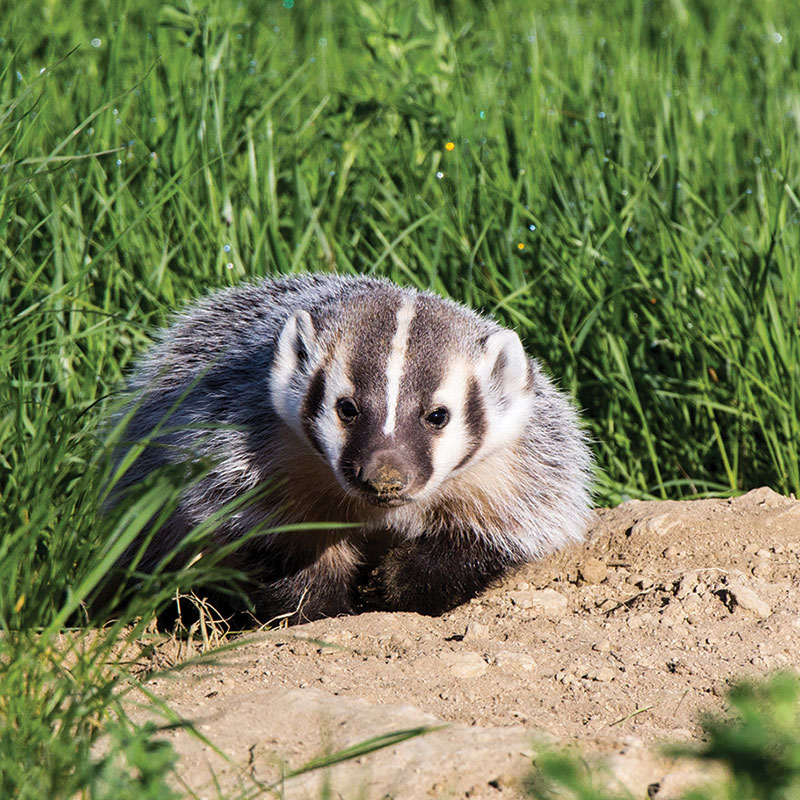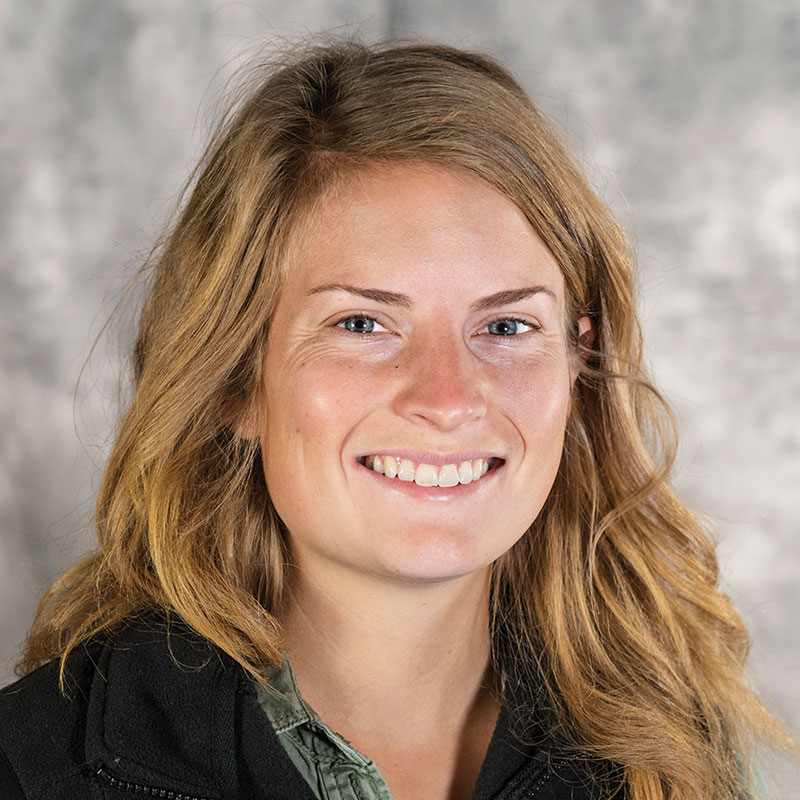The North Dakota Game and Fish Department’s 77th annual spring breeding duck survey conducted in May showed an index of about 2.9 million birds, down from 3.4 million last year.
The 2024 breeding duck index was the 30th highest on record and stands at 17% above the long-term (1948-2023) average, according to Mike Szymanski, Department migratory game bird supervisor.
“By and large, all species were flat to down. Mallards, for instance, were down about 19%, pintails were down about 29% and blue-winged teal down roughly 13%,” he said. “These species being down from last year is one thing, but when you compare it back to what we consider to be one of our best periods for breeding ducks in North Dakota (1994-2016), we’re down a lot more than that. So overall, mallards, pintails, blue-winged teal, gadwall, wigeon and northern shovelers are down anywhere from 24-49% from that 1994 to 2016 time period.”
Szymanski said the decline in breeding duck numbers has a lot to do with the loss of CRP and perennial grasses on the landscape used for nesting cover by ducks.
“While our overall duck population count this year was about 2.9 million birds, that hardly compares to 5.4 million in 2002, our record-high,” he said. “So, we’re down considerably and were getting into this realm of a lower average where we probably won’t be above 3 million breeding ducks very often based on our landscape conditions.”
As always, spring is always interesting as Szymanski and crew run more than 1,800 miles of transects counting wetlands and waterfowl down to the species and social grouping on both sides of the road. This spring, the wetland count was the 32nd highest out of 77 years.
“Coming out of winter, we were certainly quite dry after having a mostly open winter across the state, but it rained a fair bit in the 30 days leading up to our survey, so that kept it from being really dry,” Szymanski said. “At the time of our survey, wetland conditions were considered ‘fair.’ We had a lot of new water on the landscape during the survey that really wasn’t there when ducks were moving through.”
On the bright side, Szymanski said, rains in later May and into June will be a boon for renesting opportunities and nesting probability in general for ducks.
“There should be a pretty good nesting effort by ducks this year in what upland nesting habitat is available,” he said. “Wetlands are in much better shape now and there should be a really good renesting effort for those birds that had nests destroyed by predators.”
Szymanski cautions waterfowl hunters about reading too much into survey numbers just yet. He said that while the mid-continent duck populations aren’t what they once were, we’ll know more once the U.S. Fish and Wildlife Service releases their survey results sometime in late August.
“It can be really hard to predict what our fall hunting is going to be like from what we see in the May survey,” he said. “But throughout summer, we’ll have our July duck brood survey, and we’ll have a fall wetland survey in September to kind of give last looks at what production was like in the state, and then also what wetland conditions are like leading into the hunting season. It’s always important to check back and see what our surveys are showing us that we do throughout the year.”
Hunter success during the spring turkey hunting season was 49%, according to the North Dakota Game and Fish Department.
The Department issued 8,137 licenses for the 2024 spring season, and a record 6,847 hunters took 3,336 birds, the highest spring harvest on record.
RJ Gross, upland game management biologist, said spring turkey hunting success in North Dakota is usually driven by weather.
“This year the weather was very mild with no snow on the ground, and that lead to more hunters out on the landscape,” he said. “Also, turkeys had above average production last year, according to our late summer roadside counts and hunter observations of large groups of jakes this spring. Along with high overwinter survival, this led to an abundant population of turkeys.”
The North Dakota Game and Fish Department encourages boaters to plan accordingly when launching and loading a boat. Here are a few simple reminders to ensure a fluent transition at the ramp.
LAUNCHING
- Don’t pull onto the ramp until your boat is ready to launch.
- Prepare for launching in the parking area. Remove covers, load equipment, remove tie downs, attach lines and put in drain plug before backing onto the ramp.
- When ready, pull in line to launch. Wait your turn. Be courteous.
LOADING
- Don’t block the loading area with your boat until your tow vehicle is ready to load. Wait until you are clear of the launch area to unload gear.
- As soon as your trailer is in the water, load and secure your boat to the trailer.
- Remove boat and trailer from the water as quickly as possible.
- Get clear of the ramp. Pull into the parking area to finish securing your boat, unload gear, drain all water and inspect for and remove any vegetation. Remember to leave plugs out when transporting your boat.
Anglers can help fisheries managers by reporting information on tagged fish.
Most tagged fish in North Dakota, except salmon, will have either a metal tag on the jawbone or a small tag attached near the dorsal fin. Tagged salmon have their adipose fin removed and also have a microscopic, coded wire tag embedded in their head. Anglers are asked to drop their tagged salmon heads off at Game and Fish offices in Riverdale or Bismarck so that biologists can remove the tag and read it.
North Dakota Game and Fish Department fisheries biologists say it’s imperative anglers report tagged fish from whatever waters they are fishing in, no matter if they end up in livewells or back in the lake. Anglers are also encouraged to treat tagged fish just like they would treat any other fish they might have caught. Anglers practicing catch-and-release should record the tag number before releasing the fish.
Anglers are asked to record the tag number and report that along with the date and location the fish was caught, approximate size and whether the fish was harvested or released. Tagged fish can be reported online, or call the Department’s main office in Bismarck at 701-328-6300.
Regardless of how safe and cautious boaters are on the water, accidents happen. If a boating accident involves injury, death or disappearance of a person, an accident report must be completed and sent to the North Dakota Game and Fish Department within 48 hours of the occurrence.
If property damage exceeds $2,000, but no deaths or injuries occur, a boat operator has five days to file a report.
These reporting requirements are mandatory whether there is one or more boats involved.
A boat accident form is available online, at any Game and Fish office or by contacting a local game warden.
Photographers interested in sending photos for the North Dakota Game and Fish Department’s Watchable Wildlife Photo Contest are asked to follow the guidelines for submitting their work.
Photographers should go to the Game and Fish Department’s website. Then it is a matter of providing some pertinent information about the photo and uploading it. Doing so helps both with ease of submitting photos for the photographer and managing those images for Department staff.
The contest is now open and the deadline for submitting photos is Oct. 1. For more information or questions, contact Patrick Isakson, Department conservation biologist, at 701-328-6338.
The contest has categories for nongame and game species, as well as plants/insects. An overall winning photograph will be chosen, with the number of place winners in each category determined by the number of qualified entries.
Contestants are limited to no more than five entries. Photos must have been taken in North Dakota.
By submitting an entry, photographers grant permission to Game and Fish to publish winning photographs in North Dakota OUTDOORS, and on the Department’s website and social media accounts.
North Dakota state law requires youth ages 12-15 who want to operate a boat or personal watercraft by themselves with at least a 10-horsepower motor must pass the state’s boating basics course.
The course is available for home-study by contacting the North Dakota Game and Fish Department at 701-328-6300. Two commercial providers also offer the course online, and links to those sites are found on the boat and water safety education page.
While the home-study course is free, students are charged a fee to take it online. The online provider charges for the course, not the Game and Fish Department. The fee remains with the online provider. The course covers legal requirements, navigation rules, getting underway, accidents and special topics such as weather, rules of the road, laws, lifesaving and first aid.
The next guide and outfitter written examination is Aug. 17 at 1 p.m. at the North Dakota Game and Fish Department office in Bismarck. Preregistration is required no later than Aug. 9 by calling the Department’s enforcement office at 701-328-6604.
In addition to passing a written exam, qualifications for becoming a guide include a background check for criminal and game and fish violations, certification in cardiopulmonary resuscitation and standard first aid, and employment by or contract with a licensed hunting outfitter.
Hunting outfitter eligibility requirements include the guide qualifications, and an individual must have held a hunting guide license for two years and must have proof of liability insurance.
Outdoor recreationists are encouraged to keep it clean this summer by packing out all trash.
All garbage should be placed in proper trash receptacles. If trash cans aren’t available, or full, dispose of trash at home.
It is not uncommon to see garbage piling up around full trash containers. Styrofoam containers are not biodegradable, but are often found wedged in cattails, drifting or washed up on shore.
Tires, mattresses and kitchen appliances have found their way to public use areas. This illegal dumping is costly to clean up and takes a significant toll on the environment. Not only does it spoil the beauty of the land, it destroys habitat, has the potential to pollute North Dakota waters and can injure wildlife.
The North Dakota Cooperative Fur Harvester Education Program is hosting fur harvester education classes July 30 and Aug. 1 and 3 at the North Dakota Game and Fish Department in Bismarck and Oct. 3, 4 and 5 at the Velva Wildlife Club in Velva.
Fur harvester education classes are 16 hours in length, free, voluntary, and cover topics associated with trapping and fur hunting. Much of the instruction includes hands-on experience with traps and equipment commonly used for harvesting furbearers and properly caring for the pelts.
Successful completion of this training provides certification recognized by other states where mandatory trapper education training is required. Participants can enroll for either of these classes on the Game and Fish Department website.
The North Dakota Cooperative Fur Harvester Education Program is also hosting a Using Cable Devices in North Dakota training seminar on Oct. 12 from 9 a.m. to 4 p.m. at the Velva Wildlife Club.
The seminar is free and available to anyone who would like information and experience using cable devices. All aspects of cable device construction, care, use, ethics, responsibility and legal requirements are covered. Much of the instruction includes hands-on field application and set construction. Preregistration is required by contacting Rick Tischaefer at 701-460-1055.
Link, Bendel Honored
Greg Link and Cayla Bendel were recognized for their achievements at the annual conference of the Western Association of Fish and Wildlife Agencies in Stevenson, Wash., in June.
Link, Game and Fish Department conservation and communications chief, won the Special Recognition Award. A longtime agency employee, he was instrumental in spearheading the Department’s well-known Private Land Open To Sportsmen program in the late 1990s.
“His passion for developing habitat led him to the position of private land coordinator from 1997-2001 where he embraced the challenge of developing PLOTS, one of the most recognizable private lands habitat and access programs in the country,” said Kevin Kading, the Department’s current private land section leader. “Through Greg’s leadership and collaboration, relationships with private landowners, conservation partners and agricultural entities were developed, and the program flourished. The PLOTS program has had far reaching impacts and is still providing opportunities for private landowners and hunters today.”
Bendel, Department R3 coordinator, won the Conservation Change Agent Award, presented to an individual who is catalyst for positive change, growth, or innovation in an agency.
“Cayla had the monumental task of taking on the R3 position that was new to the Department and presented a new way of thinking to North Dakotans,” said Casey Anderson, Department wildlife division chief. “She has come up with ways to reach new audiences that we honestly would not be doing and surely wouldn’t be excelling at if not for her forward thinking. Cayla brought the Department into the online media world, and it has quickly accelerated our programs outreach abilities.”
Fladeland Joins Agency
Joe Fladeland was named fisheries development specialist for the North Dakota Game and Fish Department earlier in spring.
Fladeland was a crew leader for a local fencing company in the private sector before joining the Department.








